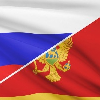The goals and objectives of industrial policy in Montenegro until 2020
This is an automatic translation.
Click here to read the publication in the original language.
The goals and objectives of industrial policy in Montenegro until 2020
In the previous article Reindustrialization of Montenegro: a low start, we gave an assessment of the economy of the Montenegrin developers of the program "Industrial policy of Montenegro until 2020". On this basis, four strategic goals were formulated.
The first is the development of the competitiveness of the Montenegrin industry, including tourism is included here, one can not do without it. Here - reduction of costs, more efficient use of natural resources, development of broadband communication, automation of industries, modernization of production. Indicators to achieve this goal should be the growth of Montenegro's position in the World Economic Forum's global competitiveness rating and the World Bank's business rating by 10% points by 2020.
To do this, it is planned to assess (probably reassess) the country's energy resources, optimize transport links, and introduce modern technologies into priority sectors. More specifically, it is the reconstruction and modernization of existing and creating conditions for the construction of new infrastructure facilities, for example, the port in Bar, the construction of wind, solar power stations and small hydroelectric power stations, and the expansion of the use of air transport. At the same time, the need to overcome the structural nature of unemployment is declared, the imbalance in the labor market will be overcome through the creation of new jobs, in industry, and training of specialists taking into account the forecasting of development of priority sectors.
The second strategic goal is to increase investment in the modernization of industry. This is planned to be implemented through improved access of producers to banking instruments, attraction of external investment and funds of state funds. Banks today do not have sufficient resources and tools to support business, and there is a need for both. State funds are also not enough, so Montenegro hopes for substantial infusions of international financial institutions.
Montenegro is interested in direct investments in priority sectors of the industry, which include the food industry, wood processing, the production of metal products and pharmaceuticals. The Program mentions that investment will be attracted to projects that create at least 20 jobs.
Indicators for achieving the second strategic goal should be: + 10% in the global rating of investment attractiveness of IESE, the emergence of business angels, the growth of the share of investment in fixed assets in industry and so on.
The third goal is the development of entrepreneurship (innovative, of course): improving effective planning, increasing the monetary and credit sector and development indicators, organizational improvement of small and medium-sized businesses. This should increase the dynamics of small and medium business development and its productivity. I think this is the most difficult part of the plan.
The authors of the draft are right when they say that since the majority (the overwhelming, what is there ...) of small and medium-sized enterprises in Montenegro concentrated their activities in the direction of trade and services, then in order to achieve the goal of re-industrialization it is necessary to make a radical turn towards the development of production. Also, the authors of the plan understand that the transition from the tourism trade economy should initiate and direct the state. Support should be directed towards companies that can provide the greatest impact on the growth and development of the economy of Montenegro, and these are large enterprises (group of enterprises) that are proposed to restructure and modernize. It is obviously about overcoming the traditional organization of small and medium-sized businesses, which is rather archaic (and not only in Montenegro) and determines the structure of the economy of Montenegro.
Some performance indicators here should be an increase in the number of enterprises by 10% in municipalities with a low density of companies, an increase in the turnover of existing enterprises by 5% per year and an increase in the various global ratings by the same 10%.
Strategic goal number four is to ensure interaction with the external market. Here it is supposed to simplify trade procedures, facilitate access of companies from outside to Montenegro and from Montenegro to the foreign market. To focus attention is offered on export activity of enterprises in priority sectors, promotion of local companies in international industrial clusters, internationalization of business. Effectiveness will be determined by optimizing customs clearance, streamlining pricing, increasing the representation of Montenegrin enterprises on the Internet, improving the rating position by 10 points in the World Trade Ranking of the World Trade Center and the World Bank Logistics Development Rating.
Achieving the set goals implies solving a huge number of tasks. This will be done by an interdepartmental working group, in which the Ministry of Economy plays the main role. Undoubtedly, from the very beginning of the project development it was obvious that Montenegro will not be able to solve these tasks, relying on its own resources.
The document was drafted with the help of various EU organizations and the world level - the list is very impressive; the plan is aimed at compliance with the EU standards, is focused on large-scale EU assistance (and not only), including financial assistance, so that the EU and various international functionaries will surely control its implementation. Completely the issue of financing has not yet been finally solved for certain (but the project external borrowings are very large), including, due to the large number of potential participants in re-industrialization. On the other hand, the interested external participation increases the chances of realization.
The author will be grateful for indications of inaccuracy and inaccuracy in the article.
Evgeny Novozhilov
#EvgenyNovozhilov
reference to the source for analysis
This is an automatic translation.
Click here to read the publication in the original language.






































